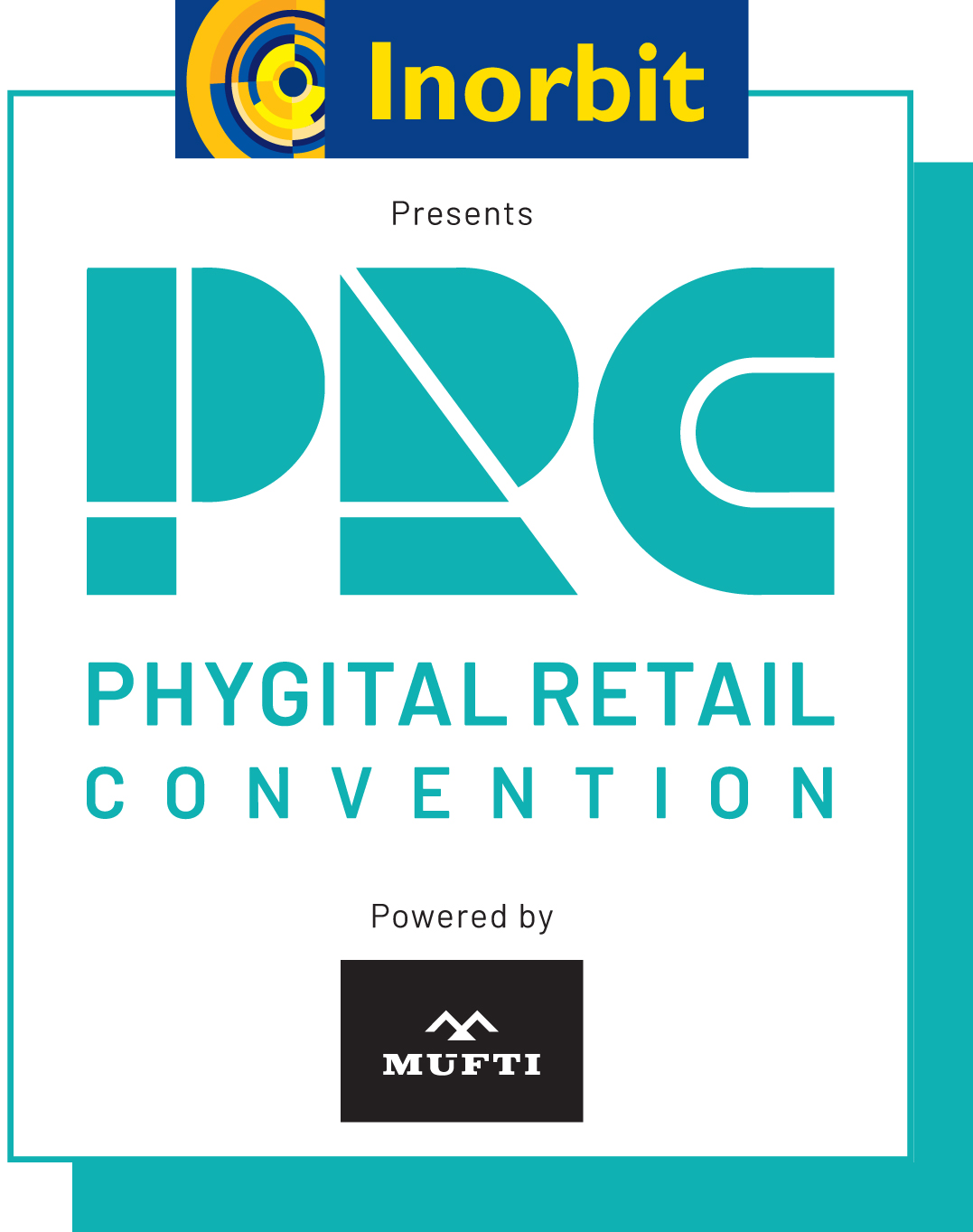In a bid to support retail employees and their families impacted by COVID-19, IMAGES Group and Trust for Retailers and Retail Associates of India (TRRAIN) hosted Retail Panchayat, a first-ever, pan-India humanitarian campaign.
The inaugural session was co-hosted by B S Nagesh, Founder, TRRAIN, and Amitabh Taneja, Chairman and Managing Director, IMAGES Group. The guest speakers included retail stalwarts like:
– Darpan Kapoor, Chairman, Kapsons Group
– Jitendra Chauhan, Chairman and Managing Director, JadeBlue
– Manohar D Chatlani, CEO and MD, Soch Apparels
The platform of the Retail Panchayat was used to exchange ideas on possible solutions for the immediate crisis facing retailers across India, as well as the short and long-term implications of changes in consumer behaviour, digital optimisation and economic climate. Panelists exchanged ideas on how retailers could rethink existing business models, take digital transformation routes, work on supply chain efficiencies, customer engagement concepts and how they could implement long-term innovative ideas.
1. How the Pandemic Has Affected the Retail Industry
BS Nagesh kickstarted the session by saying that for both big box and small brands and retailers the lockdown has been severe to say the least since all costs are still definitive, but revenue has become uncertain. The condition has been made worse by the fact that the retail industry was already suffering from an economic slowdown of late.
The retail industry in India, he added, is a big contributor to the GDP of the country and provide employment to approximately 46 million people. “We have submitted proposals to the governments at both the Centre and state levels hoping that some relief will be earmarked for the Retail Industry, but nothing has happened so far. There has been no liquidity / working capital provided by the government to the sector, but retailers still need to pay salaries and suppliers in times when they are earning close to nothing,” Nagesh stated.
“In this situation, retailers need to take stock of their business models and work towards survival – both for themselves and for their employees. However, the reality is that in a pandemic, non-performing stores will face shutdown and people will lose jobs,” he said.
Nagesh said that the industry needs to come together to help retail associates who have/ are on the brink of losing their jobs because these front line associates have helped the industry reach where it is and will come back to it once the current crisis comes under control. He said this was the thought with which the Retail Panchayat was conceived.
2. Going Beyond COVID: The Future of Store Formats
Amitabh Taneja steered the debate to another issue – store formats. He asked Darpan Kapoor, Chairman, Kapsons Group what the future of multi brand physical stores was in India post the COVID era.
“Multi brands stores will never go out of business. If you keep your focus, you know what the customer wants and you don’t deviate from what you’re selling as of now, there is no way you can go out of business. The key is not to lose confidence in your concept and not to compromise on brand mix. At Kapsons, we have not changed our style of working, and customers have confidence in us. The convenience for the customer to come and shop at a family store cannot be denied,” Kapoor explained.
Kapsons runs 28 multi brand stores – their original business – which are doing exceptionally well. He said that his advice to multi brand retailers in other cities was to keep doing what they were and that this model of retail would sustain over the years.
Aside from this, Kapsons has a distribution business as well. Kapoor said the reason for this was that although multi brand physical stores had continued doing business amid the rise of e-commerce, a lot of interest had been diverted towards online retail and many consumers were shifting online.
He explained that Kapsons was one of the first companies to start distribution in organised retail. His company now distributes brands like US Polo Assn., Flying Machine, Ed Hardy, Jack & Jones Arrow and FCUK among scores of others to all major online portals in India – including Amazon. This means that when e-commerce giants wants to sell one of these brands, they would need to approach Kapsons for the inventory and not the actual company.
Nagesh said that while India was a country which had a very high density of stores, it was also important to align with the aspirations of Gen Z who were shifting to online purchases. He added that in country a like India, it was relatively easy for large and small enterprises to go online because there were multiple startups who ready to help them achieve that.
He said that it was important for second generation retailers to collaborate with someone who would help bring in technology to their brand, something which would ensure their customers are online with them. This will also help retailers expand categories.
3. The Future of Independent Brands
Taneja then shifted gears asking Jitendra Chauhan what the future of independent brands like JadeBlue and Green Fibre was. He said wanted to know how far did Chauhan see his brands moving in this competitive world replete with international brands and quality fashion and value fashion domestic brands.
Talking more on physical stores vs online stores Jitendra Chauhan – who runs a fleet of 22 JadeBlue stores and 38 Green Fibre stores, both menswear brands – said that most of their business are done on a physical platform. “If the COVID-19 pandemic had not happened, we had big plans for Green Fibre this year. A separate team was set with franchisees, because with an investment of around Rs 20-22 lakh, we get good returns on Green Fibre stores which are small 500-1,200 sq. ft. outlets. Out of the 38 stores, 19 are franchisee stores and some of them are more than a decade old,” he explained.
“We were also all set to introduce a new smaller format JadeBlue store as part of our expansion plans,” he added. Currently, the JadeBlue store format is around 10,000-12,000 sq. ft.
The reason, Chauhan said, was that when they had opened stores in Bhopal and Indore three years ago, they realised that due to large format design the investment of opening in states that were not your home state were very high and it was difficult to run operations.
Nagesh agreed with him saying that the money needed to establish a brand in a new state was a lot. Other than the capital investment, a lot of marketing investment which was required in a new state and therefore it is difficult to draw the same trading density as sales per square foot. He said that in the first year in a new state, a retailer would spend approximately Rs 300-500 per square foot only on marketing.
“Apart from this, retailers need the right opportunities, they need to provide the right assortment, ensure you have the right team and provide excellent customer service. This last is very important because unlike in grocery retail, a customer comes maybe 4 to 6 times to a fashion store and in these 4 to 6 times, the retailer needs to win them over and convert them into loyal consumers. All our panelists today have reached the level of success they have because somewhere they have been able to deliver the best of customer service and experience. The way they have serviced the customer is what they have built the brand on,” Nagesh added.
Darpan Kapoor concurred with Nagesh, saying, “I always tell my team that it’s better to be regionally smart than nationally present. Presence does not give you profitability. So, if you are not profitable there is no need to go national. It is also not advisable that you spend money, open a store in another city, put in all that money, energy, and effort, just to close shop. This can have a very negative impression on your brand as well, especially since the brand was getting some customers in the new city. Closure is no solution to any business. Sustaining it with a different way of working is the best solution.”
4. The Future of Soch: Where is the Brand Going Beyond 2020?
Premium ethnic wear brand Soch was incepted in the year 2005 with a store at Forum Mall, Bengaluru. In nearly 15 years of its existence, the brand has grown from strength to strength and is now present in more than 200 consumer touchpoints across the country in over 50 cities. It is also available to consumers through its webstore Sochstore.com and via online fashion aggregators like Myntra, Flipkart, Amazon, PayTM Mall, GoFynd and Tata Cliq etc.
“From 2009-2019 we opened 130 stores. Like most of the retailers in business, we earned Rs 25 crore, paid Rs 6 crore in taxes, borrowed some from the bank and along with the Rs 17 crore we had leftover, reinvested in expansion,” Manohar Chatlani stated.
With an impressive Q3 2019-2020 behind it, the women’s Indian wear brand was looking forward to exciting things in 2020. However, the COVID-19 crisis completely spun all these plans on their heads. Soch has reopened its stores over the last two weeks and Manohar Chatlani said, “We have done about 44 percent of last year’s business around this time, which is very encouraging for us. We expected this figure to be around 10-20 percent in the wake of the pandemic. I don’t know how others, who have opened their stores, are faring. As far as the future is concerned, I figure that probably 20-30 percent of retailers might close their stores permanently. This will reduce competition.”
He said that for Soch, the difficulty would come in the form of buying since the brand sources apparel from cities like Mumbai, Delhi, Kolkata, Chennai, Ahmedabad and Jaipur and there are travel restrictions.
For now though, it is bad news since the brand may have to shut down 10-15 stores (out of a total 130 stores) which are not yet at break-even point or are losing marginal sales, unless they get a really good deal from the mall owners and high street landlords where they can carry for the next 6 to 9 months. And, according to Chatlani, every retailer is thinking on the same lines because it’s better to have some stores operational and save a large chunk of jobs than to close down the entire business. “We have entered survival mode now.”
“Retailers are running out of cash and the Government needs to take this very seriously. There are retailers with deep pockets, who can survive a situation like COVID-19 for a good 9 months to one year, but almost 80 percent of retailers don’t have such deep pockets,” Chatlani said, adding that there is hope that in 3 to 6 months’ time, things should come back to normal, at least on high streets.
Jitendra Chauhan agreed saying that if a store is not profitable it is advisable to close it. “Now is the right time to correct our flawed business models. We are very optimistic that both of brands will pick up sales again post the pandemic. We just need to adjust our business models and wait for the next six months to pass,” he added.
“I fear malls will take longer to return to normalcy. People are very scared and may not go to malls. Also, if restaurants and cinema halls don’t open soon, malls may take even longer to come back to normal. On the other hand, I feel MBOs have a good future because they can give the consumer the convenience of shopping multiple brands in one place, something which EBOs and LFS cannot.”
5. The Brick-and-Mortar Retailer’s View on The Evolution of Online Retail
India’s retail sector employs over 46 million of her citizens. A vast majority of them come from middle-income and lower-income salaried classes from across India’s urban, peri-urban and rural heartlands. Their livelihoods and futures are in immediate peril as retail businesses continue to be deeply damaged by the ongoing COVID-19 and economic crisis. The industry is particularly vulnerable to employee safety concerns and workforce management challenges, with the most immediate hurdles being dealing with changes to operating norms in physical stores and supply chains, as well as the sudden migration of corporate employees to remote working.
In response to this, a large number of Indian retailers are beginning to adopt online business models. However, a lot of work is required to go digital – how will a company showcase all its products and information online, how will the garment size, colour and material be correctly conveyed to the consumer etc.?
Amitabh Taneja asked Darpan Kapoor his view of online retail since Kapsons is both into the brick-and-mortar model as well as an online distribution model of retail.
Darpan Kapoor said that although his business was online and he had hired experts to help him, brand owners needed to pitch in full time to make the online model a success.
“However, the beauty of online is that in the fourth year that we have set up online stores, we have a reasonably good presence on all major portals, while in offline, it took my brand 20-30 years to reach where it is now. Online, we have a hefty customer base, our sales are regular and growing. I would not have imagined selling 2 lakh units in 7 days in my brick-and mortar stores as I did in just one Myntra sale,” he stated.
Nonetheless, he cautioned online hopefuls saying that it was important to sell more and have fewer returns. He said retailers who want to jump into the online business must understand technology and streamline their operational efficiencies.
“The biggest opportunity, I feel, in India’s online retail landscape is the fact that if you don’t have Rs 20-40 crore to invest in a new business, all these start-ups can just onboard portals like Kapsons who can help them get on to the best portals in the country and help them establish a presence there. The start-up should concentrate on their strengths and let portals like Myntra, Amazon and Flipkart do what they do best,” explained Nagesh.
The panel felt that in times to come, the shift to Omnichannel experiences will accelerate. Technologies like RFID, Bluetooth, QR Codes and Bar Codes will provide a seamless mobile handoff that transfers content to a shopper’s mobile phone without him ever touching anything on the shelf. Customers should be able to complete transactions on their mobile devices and ship directly to their homes.
6. What Motivates an Entrepreneur
When asked by Amitabh Taneja what was it that motivated an entrepreneur, Jitendra Chauhan said that for him, it was complete focus and interest in his work.
“I had never though that I would ever open these many stores. From 1981 to 1995, we were running a tailoring store, in 1995 when we opened the first JadeBlue store spanning 2,800 sq.ft., in Ahmedabad there was a lot of noise. It was best store in terms of interior and services. We opened the second JadeBlue store in 2004. We opened another store in Vadodara which spanned 4,400 sq.ft. and opened another store in Rajkot in 2006. In 2007, we opened in Surat. All these four stores are Company Owned and Company Operated (COCO) stores and most of the profits were coming from these stores. And most of the profits are coming from these stores. In 2008, we bought and opened another store in Ahmedabad, and again in 2009 in Vapi and in 2010 in Indore. We opened another six stores in 2011 in a single year, including one in Hyderabad, covering 17,000 sq.ft., that broke even in five years.”
Amitabh Taneja said that it was important for smaller retailers to understand how this business model worked – COCO stores instead of franchise or rented properties and asked Nagesh to explain it further.
Nagesh said that it was important to understand the business model. “If a retailer can reach 15 to 18 percent EBITDA or if a retailer could turn stocks 6 to 9 times a year or if his sales were between Rs 18,000 to Rs 25,000 per square foot, then it made sense to buy their own property and open stores, just like DMart.”
When Taneja asked if a COCO model was better, Nagesh said it was better only and only if a retailer’s business model supported buying properties and if he can sustain it by aligning both his equity and debt. In short, Nagesh said that the success of COCO depended on the turnover of a company, the sales per square foot and the throughput.
He further explained that retailers preferred to rent because their yield was lower than the cost of purchasing a property. Also, renting involved less risk taking – renting meant retailers could take multiple properties and open a chain of stores rather than buying one property and getting stuck with it. “It is important to understand both the science and the art of retailing,” he stated.
Manohar Chatlani said that his thoughts on buying vs renting are very simple. “If you are on a new, upcoming high street then buy. People are going more and more to the outskirts to shop. For example, no one used to shop in Bandra or Lokhandwala in Mumbai earlier, or in Jayanagar in Bengaluru. Now these are all hotspots. However, on a developed high street the rental is 2-3 percent per annum and so it’s not worth it buying a store there. If you are going to invest in such properties you will open 3 shops instead of opening 30 shops. With bank loan your investment is not going to be very high. And if you chose the right property, the right location, your returns in the business are going to be fantastic and your returns in property appreciation would also be amazing.”
7. Innovations & Ideas in Post COVID Times
Nagesh then asked the panelists what were the thoughts with which they would move ahead into post COVID times. He said that with this virus, it had become imperative to think innovatively.
Kapoor said that in today’s times, it would be tough to serve a consumer if your inventory was not available digitally on a tablet. Kapsons has developed a platform wherein a customer who walks into a store can come to know his entire purchase history. “Based on this history, he gets suggestions on what s/he should buy next, what’s new in the store etc. Everything is available on his screen including the latest inventory. Digital is the way forward for my brand and every other brand. It will now become more and more tough to serve consumers without having a digital presence.”
“A loyalty program is also very important for consumers who are not attached to you will not come back to your store and the reality is that acquiring a new customer is far more expensive than retaining an old one,” he added.
Chatlani agreed saying that at Soch today, most concept planning, merchandising, interiors, innovations in technology are being planned keeping a post COVID-19 scenario in mind. “This is aside from regular precautions which we are taking which include sanitization, gloves, UV scanning etc. As far as loyalty is concerned, we have been serving consumers for the last 15 years. We have many third generation consumers coming to our stores now. I feel, like Nagesh, that money doesn’t make a brand. You could spend crores on beautifying your business but if you don’t service your consumer well, you will always lag behind.”
He added that to serve customers better, Soch checks the client’s purchase history and preferences, then sends them a video catalogue on WhatsApp. “Once they choose a product, we give them a WhatsApp call, give them a video view of all the garments in the similar category and help them choose and finalise the sale. We are also happy to send tailors home to take measurements. We have also offered alteration services – pick and deliver clothes at home – because people have lost weight / put on weight during this lockdown and a lot of alterations are being demanded. This is an absolutely new market,” he added.
Chauhan concurred with Chatlani saying that his company too had invested in a digital catalogue which has helped customers to pick designs from any place, at any time. “We have extremely personalised loyalty programs, wherein store managers personally know clients and are sending them digital catalogues. These consumers can then digitally try on the fabric and put in inquiries of tailoring.”
8. Retaining Customers
With Coronavirus, a lot of customers who are 60+ years old and who have no responsibilities and a lot of money have suddenly stopped shopping. The problem – the COVID advisory says that people above the age of 60 are very vulnerable to the virus. How will retailers retain this age group of consumers?
Kapoor said, “With COVID 19 everything has gone for a toss. Even if the stores are open, they are not open during prime time. Prime time in summer is 6 PM to 9 PM and that time we will be closed now due to Coronavirus. That means we are getting customer by invitation and only those customers are coming who have some necessity – who need to buy something urgently. With this black swan event, the walk-in customer has become pretty much extinct. I feel it will take at least a year or so for this situation to come under control.”
“As a retailer we are the last point in the product cycle and we still have very limited expenditure to bear. Since we are more in the high streets and less in malls, most of our tenants are ready to cooperate with us. The profits will be less, and smaller retailers may not be able to bear expenses for too long, and thus may find it tough to stay afloat,” he added.
Chauhan agreed saying that while there may be some profits for bigger retailers and retail chains, the industry as a whole will need course correction. “We will have to control expenditure, cut down on advertisement cost, focus on smart inventory – for example, stocking clothes which can be sold in multiple seasons,” he explained.
9. Big Thought: Serve at Home
The big thought that emerged from the panel discussion was ‘Serve at Home’ retail. This is the one factor which will help the growth of many a retail company and apparel and lifestyle businesses need to explore this model very seriously. For this, retailers will need to leverage new connectivity tools and ways of working to support staff – both working in store and remotely.
Aside from this, retailers will need to scale e-commerce operations and switch focus to digital consumer experiences as consumers turn increasingly towards online ordering and home delivery.
The panelists were all of the opinion that retailers need to adopt a proactive approach and be open to new opportunities such as digital catalogues, pick online and collect in store, e-stores, pick in store and deliver to home options.
While there were concerns that like work from home is changing the working / co-working space dynamic, then delivering at home and ‘serving at home’ by retailers could change the dimension of real estate in retail, in the end, the panel concluded that home service is what will open new business avenues for the retail industry in the post COVID-19 era.
They felt that retailers who will be most adaptable to change, who are willing to serve the consumer in his comfort zone – i.e. home – will be best positioned to ride out the immediate challenges. Retailers must use their stores as mini online distribution hubs to build stronger, more customer-centered businesses. If there’s one lesson that has emerged in this crisis, it’s about the importance of being prepared for anything. The panel concluded that retailers who are able to anticipate and respond quickly to the changes happening around them will be the ones to watch.
10. THE ANGEL DONORS
IMAGES Retail is working closely with TRRAIN, which has set up a relief fund to offer and provide sustenance support to deserving retail associates and their families over the next three months until the COVID-19 situation comes back to normalcy. TRRAIN will identify retail employees who have no means of income post April-May 2020 and provide them with an income bridge for three months until they are able to seek alternate employment. TRRAIN will also leverage government schemes by connecting the associates to them for short- & long-term relief. In order to ensure transparency towards the money collected by the relief fund (which has already reached up to Rs 2 crore), a five-member independent board has been set up.
The beneficiaries (retail employees) will also be on-boarded onto the TRRAIN Circle mobile app (an app to help and enable a better life for the frontline employees employed in retail & another sector) to have access to over the phone counseling services, additional financial services, and e-learning courses to develop skills & disbursement of financial aid.
Through the Relief Grant, TRRAIN will be offering to the beneficiaries:
•Rs 4,000 per beneficiaries over a period of 3 months
•Enrollment to Government of India’s relief schemes for grants starting from Rs 1,000/-
THE HUMAN COST (Source: RAI)
– Small retailers expect to lay off about 30%, mid-size retailers 12% and large retailers 5% of their respective workforce as a result of the COVID-19 crisis.
– Overall, 20% of the Indian retail workforce may be laid off.
Retail Panchayat hopes to benefit over 5,000 families with much-needed financial support in these difficult times.
Here is what some of the angel donors had to say:
How Will the Logistics Industry Support Retail?
Safe Express has been the backbone of the Retail Industry for many, many years now.
“Today, fashion is not limited to the mega metro cities alone – Delhi, Mumbai, Kolkata, Chennai – it has extended to remote locations in Tier II, III and IV cities too. When organised retail started in India, we started modern logistics side-by-side. Safe Express has been associated with the fashion fraternity since modern fashion retail was taking shape. Today, we are servicing every square inch of India. We have reached 30,0338 pin codes and are delivering in every corner of the country,” said Pawan Jain, CMD, Safe Express.
He said that there is no such thing as pre or post COVID for both the retail and logistics industries, but that we will have to learn to live and learn to work ‘with’ COVID. Internally we are also learning and re-learning how to support brands in this new world. If you see, with the opening up of some markets, people have already started ordering and deliveries are happening very fast. Hopefully, we should come back to normal by the time Diwali season comes around – around September,” he added.
The Commercial Understanding of Malls
According to angel donor and guest speaker, Rajneesh Mahajan, CEO, Inorbit Mall, “The rentals in malls work very differently and what makes them range from Rs 70 to Rs 700 is the category. Rents are not decided by malls, they are decided by category heads, and in these category heads by the lead retailer in that category.
Mahajan explained this with an example.
“If I decide I want 10 denim shops in my mall, which ones will I choose? I will of course go in for the 10 best denim retailers in the industry. Now, if there are 20 denim players in the industry and the mall only has spots for 10, then this means that they are fighting for those 10 spots. Now, the rent will be decided by the top 5 players in the industry, because when they produce per square foot, a certain top line, they know according to their business model to get back on their investment, how much rent can they pay. The player who is 5-15 percent away from the top performing retailer will push harder to make that rent money, while the one who is earning 30-40 percent lower than the top players will not be able to sustain. Now, these smaller players need to decide their business models accordingly because the rental is decided by the top player who is delivering the maximum topline per sq.ft. The others are simply playing catch up and they will always be dictated by the top player, never by the landlord or the mall,” he elucidated.
Retail Associates: The Soldiers Leading from The Front
“All businesses are facing a crisis, but we all want to move ahead with optimism. Thinking of our friends and soldiers (from my point) because they are the ones who lead from the front and a lot of our businesses survives because of the hard work they do on the floor, it is time for them to maybe take some rest, upskill themselves, as they are the next leaders of this industry. We are a young country; consumption will come back very soon. I think it’s time that businesses re-invest themselves. None of our friends should think that this is redundancy. Once these businesses have re-invented themselves all of these retail associates will be part of this new journey. I just want to say that it’s only when we give each other a hand that we can stand together collectively and be stronger than before. So, hang in there, the time will come back very soon before you know, do not get deterred by tough times like this and good times will come back soon,” said Anuj Kejriwal, CEO & MD, Anarock.
The Complete Lockdown of the Shopping Centre Industry
“One of the initiatives that I always wanted to take, and I have been trying to do, is to make my mall one of the most preferred places to work for – not just for the tenants but for the people on the floor too. And as a mall owner, I am trying to create an environment that retail associates whose brands are in Pacific Mall want to be posted here instead of in any other mall. The retail associate is the last point of a sale and I firmly believe that if your floor employees are happy and satisfied and this reflects in their body language, the sale will definitely go through,” said Abhishek Bansal, Executive Director, Pacific Mall.
“Going forward, we are working on the concerns over air-conditioning in malls. We are still working on how to bust the myth that air-conditioning perpetuates the spread of the virus. Every other infrastructure which has air conditioning will be working – airports and flights etc. If the middle seats of flights can be left vacant to adhere to social distancing norms, then why can’t multiplexes operate on the same principle? We have been trying to address these issues. We have been educating the concerned authorities and the public at large as to the precautions that malls are taking in as far as air conditioning goes, in order to instill confidence in our customers,” he stated.
A Ray of Hope
“Bhumika Group is developing two malls, one of course it at an advance stage of development and is scheduled to be launched early next year. Retail real estate is very closely associated with retail and it is not like a typical real estate where you sell, and you get out. You are actually partnering with your tenants and it is beyond a typical tenant and landlord relationship. According to me, the overview of the COVID 19 crisis is that this is a short-term problem – it could be a year or more till it is resolved but eventually things will come back to normal. People have to understand how to see this through, how to keep their heads above water. Life will become normal once we have vaccine or a cure,” said Uddhav Poddar, MD, Bhumika Group.








